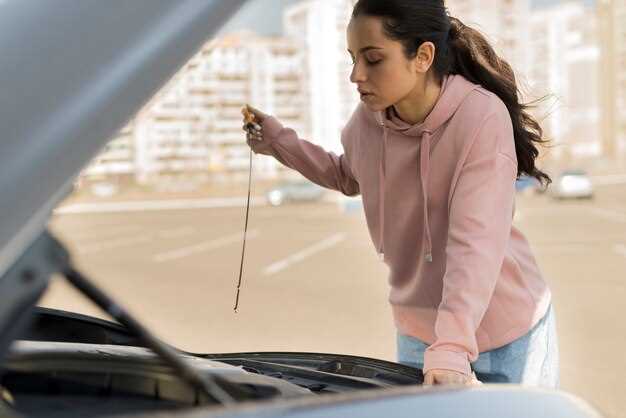How to Safely Jump-Start a Hybrid Car

Jump-starting a hybrid vehicle can be daunting for many drivers, especially those unfamiliar with the intricacies of hybrid technology. Unlike traditional gasoline vehicles, hybrids utilize both an internal combustion engine and an electric motor, which adds layers of complexity when it comes to starting the battery. Understanding the specific steps to safely jump-start a hybrid is crucial to avoiding damage to the vehicle and ensuring the safety of both the driver and surrounding individuals.
Safety should be your top priority when tackling a jump-start situation. Incorrect handling of the vehicle’s electrical systems can lead to severe electrical issues, battery damage, and even personal injury. Hence, it is essential to be equipped with the proper knowledge and tools before attempting to jump-start your hybrid vehicle. This article will outline the best practices that not only ensure a successful jump-start but also protect the integrity of your hybrid’s advanced systems.
In this guide, we will cover essential techniques and equipment needed for jump-starting hybrid vehicles, along with important safety tips to keep in mind throughout the process. Whether you are a veteran driver or new to hybrid technology, understanding these methods will empower you to handle battery-related emergencies with confidence and ease.
Understanding the Unique Battery Systems in Hybrid Vehicles
Hybrid vehicles utilize two primary types of battery systems: conventional lead-acid batteries and advanced rechargeable battery technologies, typically lithium-ion or nickel-metal hydride (NiMH) batteries. While traditional vehicles rely solely on lead-acid batteries for starting, lighting, and ignition (SLI), hybrids integrate batteries that power electric motors and support regenerative braking systems.
The most prominent battery technology in hybrid vehicles, lithium-ion, offers several advantages, including higher energy density, longer lifespan, and lower weight compared to lead-acid batteries. This allows hybrid vehicles to achieve better fuel efficiency and enhanced performance. NiMH batteries, on the other hand, are commonly found in older hybrid models. They have a robust design and are known for their reliability, although they generally have lower energy density compared to lithium-ion batteries.
In hybrid systems, the battery plays a crucial role in energy management. It stores energy generated through regenerative braking and using the internal combustion engine. When accelerating or climbing hills, the electric motor draws power from the battery, reducing the load on the gasoline engine and improving fuel economy. This interplay between the gasoline engine and electric motor is managed by sophisticated electronic control systems that ensure optimal performance.
Understanding the unique characteristics of these battery systems is essential for safe jump-starting procedures. Hybrid vehicle batteries operate at high voltages, typically between 100 to 300 volts, which can pose a serious risk of electric shock. It is imperative to follow manufacturer guidelines when jump-starting to avoid damaging the electrical system or causing personal injury.
Additionally, hybrid battery packs are often composed of multiple individual cells. Failure of a single cell can impact the performance of the entire pack, and specialized diagnostic tools may be necessary to assess the health of the battery system. Proper maintenance, including monitoring battery state of charge and temperature, is vital for ensuring longevity and reliability.
In summary, hybrid vehicles feature complex battery systems that differ significantly from traditional batteries. Their design and function directly impact vehicle performance, efficiency, and safety. Understanding these systems is critical for responsible ownership and safe handling during jump-starting procedures.
Preparing Your Tools and Environment Before Jump-Starting
Before you attempt to jump-start your hybrid vehicle, it is crucial to prepare both your tools and the environment to ensure a safe and efficient process. Start by gathering the necessary tools, which typically include a set of jumper cables that are suitable for hybrid vehicles, as well as a functioning second vehicle with a fully charged battery.
Inspect the jumper cables for any signs of wear or damage. Ensure that the clamps are clean, free of rust, and capable of making a secure connection. If you have access to a multimeter, check the voltage of both batteries to confirm that the donor battery is sufficiently charged before proceeding.
Next, ensure that the environment is safe for jump-starting. Park both vehicles on flat, stable ground away from traffic, and make sure that the area is well-lit if you are performing the jump-start at night. Disable any electronic accessories in both vehicles, such as headlights, air conditioning, or music systems, to avoid additional strain on the batteries during the process.
Maintain a safe distance between the two vehicles, ensuring that they are close enough for the jumper cables to reach but not so close that they could touch each other or pose a risk of contact during the jump-starting process.
Finally, read the owner’s manual for both vehicles, particularly the hybrid model. Familiarize yourself with any specific precautions or steps that are relevant to the hybrid battery system, as improper procedures can lead to damage or safety hazards.
Step-by-Step Guide to Connect Jumper Cables Safely

Connecting jumper cables can be straightforward if done correctly. Follow these steps to ensure a safe and effective jump-start for your hybrid vehicle.
| Step | Description |
|---|---|
| 1 | Ensure Safety: Park both vehicles close enough for the cables to reach, ensuring that they do not touch each other. Turn off both engines, and engage the parking brakes. |
| 2 | Identify Terminals: Locate the positive (+) and negative (-) terminals on both the dead battery and the working battery. Often, the positive terminal is red and the negative terminal is black. |
| 3 | Connect Positive Cables: Attach one end of the red jumper cable to the positive terminal of the dead battery. Secure the other end to the positive terminal of the working battery. |
| 4 | Connect Negative Cables: Connect one end of the black jumper cable to the negative terminal of the working battery. Instead of connecting the other end to the dead battery, attach it to a clean, unpainted metal surface on the dead vehicle. This helps prevent sparks near the battery. |
| 5 | Start the Working Vehicle: Turn on the ignition of the working vehicle and let it run for a few minutes. This allows the dead battery to gain enough charge. |
| 6 | Start the Dead Vehicle: Attempt to start the hybrid vehicle with the dead battery. If it doesn’t start immediately, wait a few minutes and try again. |
| 7 | Disconnect the Cables: Once the dead vehicle starts, carefully remove the jumper cables in the reverse order of connection: first, disconnect the black cable from the grounded surface of the dead vehicle, then from the working battery. Next, remove the red cable from the working battery and finally from the dead battery. |
| 8 | Let the Vehicle Run: Allow the revived vehicle to run for at least 20 minutes to recharge the battery sufficiently. |
Following these steps will help ensure a safe and efficient way to jump-start your hybrid vehicle, minimizing risks and maximizing the chances of a successful start.
Avoiding Common Mistakes When Jump-Starting Hybrids
Jump-starting a hybrid vehicle requires careful attention to prevent damage to the battery and electrical systems. Here are some common mistakes to avoid:
1. Using the Wrong Jumper Cables: Ensure that you use high-quality jumper cables specifically designed for hybrid vehicles. Inferior cables can lead to inadequate power transfer or electrical surges that may harm your hybrid’s complex systems.
2. Connecting the Cables Incorrectly: Follow the correct sequence when connecting jumper cables. Always connect the positive terminal of the dead battery to the positive terminal of the working battery, and the same for the negative terminals. Connecting them in the wrong order can create sparks and potentially damage components.
3. Ignoring Safety Precautions: Always wear protective gear such as gloves and safety glasses. Also, make sure the vehicles are positioned properly to avoid accidents and that there are no flammable materials nearby.
4. Attempting to Jump-Start a Faulty Battery: If the hybrid vehicle does not respond after several attempts to jump-start, do not continue trying. A faulty or deeply discharged hybrid battery may need professional assessment and replacement instead of merely a jump-start.
5. Not Allowing Enough Time: When jump-starting, allow the working vehicle to run for a few minutes before attempting to start the hybrid. This ensures that the dead battery receives enough charge to start the vehicle effectively.
6. Failing to Check System Compatibility: Confirm that the working vehicle is compatible with the hybrid’s voltage system. Mismatched voltages can lead to serious electrical issues.
7. Neglecting Post-Jump Procedures: After successfully jump-starting the hybrid, keep it running for at least 20 minutes to recharge the battery. Failing to do so may result in the vehicle not starting again after being turned off.
By being aware of these common pitfalls, you can ensure a safer and more effective jump-starting process for your hybrid vehicle.
Signs You Should Consult a Professional Instead
While jump-starting a hybrid vehicle can be a straightforward process for some, there are situations where it’s best to seek the help of a professional. Identifying these signs early can prevent further damage to your vehicle and ensure safety.
-
Persistent Electrical Issues:
If you notice that electrical systems in your hybrid vehicle, such as lights, dashboard indicators, or the audio system, are malfunctioning consistently, this may indicate a deeper issue beyond a dead battery.
-
Inconsistent Power Delivery:
Unusual fluctuations in power, such as difficulty accelerating or the engine stalling, suggest that the problem may not solely be related to the battery. A professional can diagnose whether the hybrid system or the battery needs attention.
-
Warning Lights:
If dashboard warning lights appear after attempting a jump-start, it is crucial to consult a professional. These indicators may point to underlying issues that require specialized knowledge and tools to address.
-
Hybrid Battery Problems:
A failing hybrid battery can lead to severe mechanical issues. If you suspect that your hybrid battery is not functioning correctly, consult a professional. They have the expertise to assess and replace hybrid battery packs safely.
-
Unusual Noises:
Hearing strange noises during or after a jump-start might indicate mechanical malfunction. If you hear grinding, clicking, or other abnormal sounds, it’s safer to have a professional evaluate the vehicle.
Seeking professional help at the first sign of trouble can save you time, money, and stress, while also ensuring your hybrid vehicle remains in good working condition.
Maintaining Your Hybrid Battery for Future Reliability
Maintaining your hybrid battery is crucial for ensuring its longevity and reliability. Regular upkeep can prevent unexpected failures and prolong the battery’s life cycle. Start by understanding the battery’s condition, which can often be monitored through diagnostic tools available at dealerships or specialized service centers.
Temperature management plays a significant role in battery performance. Hybrid batteries typically perform best in moderate temperatures. Avoid exposing your vehicle to extreme heat or cold for extended periods, as this can lead to reduced efficiency and potential damage.
Regular charging habits also affect battery health. Hybrid vehicles often utilize regenerative braking, which helps recharge the battery; however, it’s important to ensure the battery isn’t consistently allowed to deplete completely. Regularly topping off the charge helps maintain optimal levels and supports overall health.
Additionally, pay attention to your driving patterns. Aggressive acceleration and hard braking can stress the battery and reduce its lifespan. Smooth driving not only enhances fuel efficiency but also reduces wear on the battery.
Routine inspections are essential. Check for corrosion around battery terminals and ensure connections are clean and secure. Consult your vehicle’s manual for recommended service intervals and follow these guidelines strictly to ensure the battery remains in peak condition.
Finally, if you notice any signs of battery weakness, such as reduced fuel efficiency or warning lights on the dashboard, seek professional assistance promptly. Early diagnosis can prevent more extensive damage and ensure that your hybrid vehicle remains reliable on the road.

